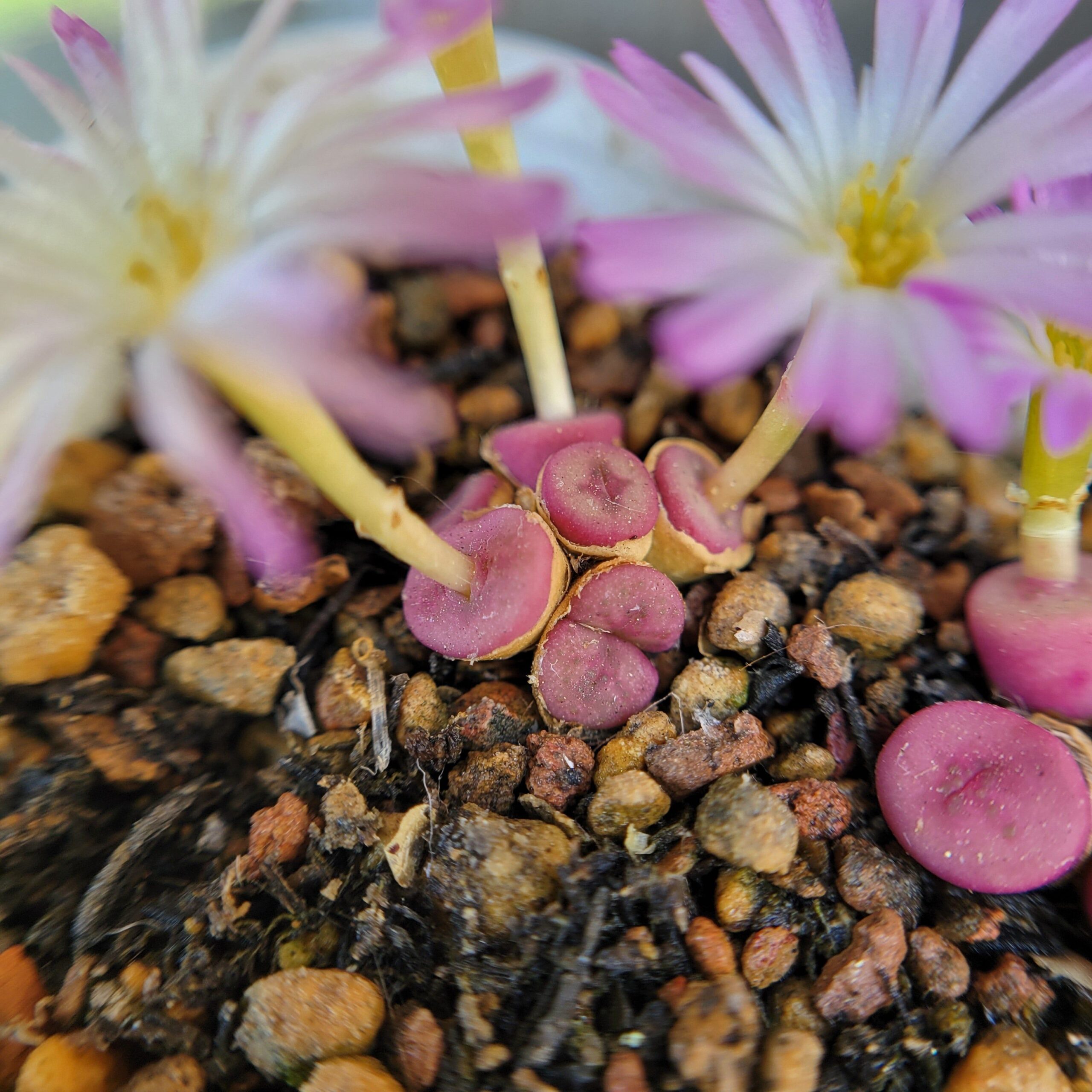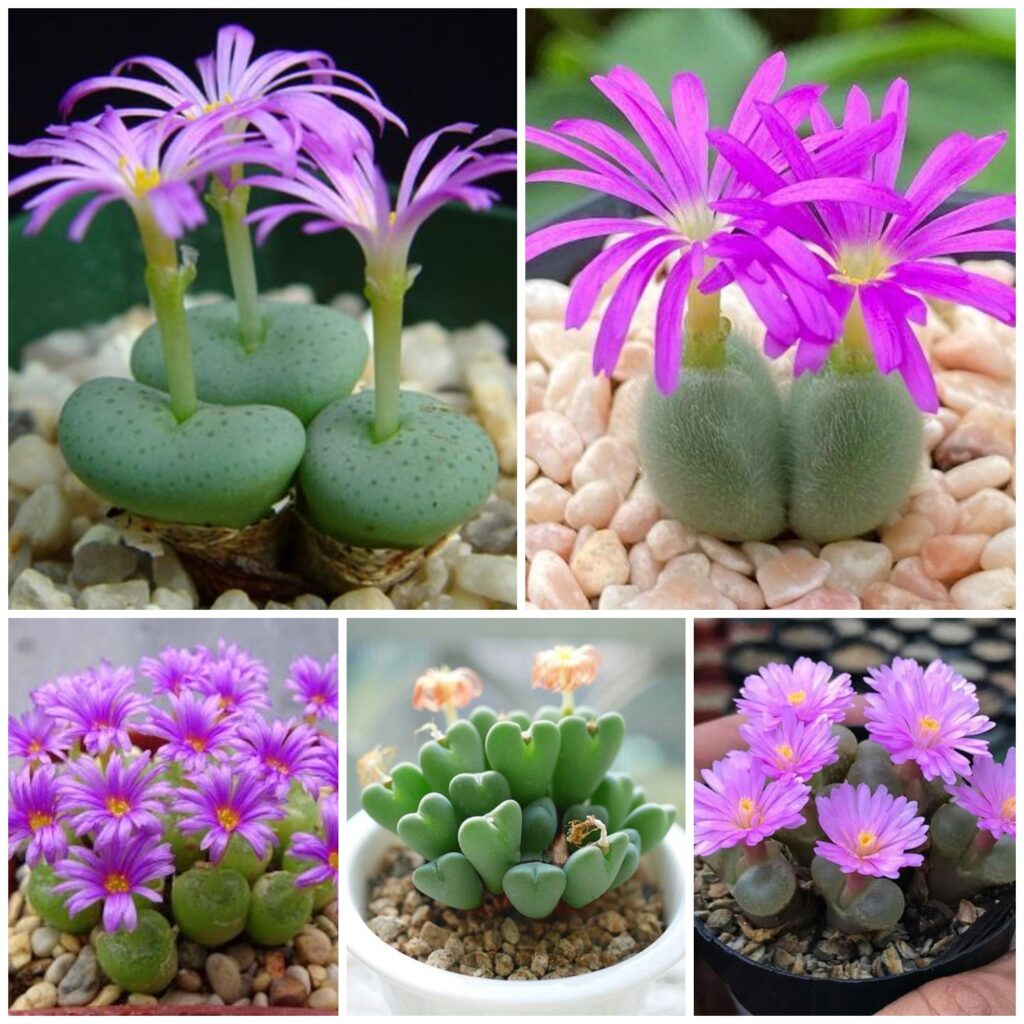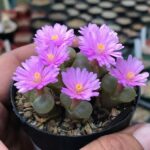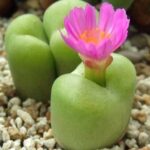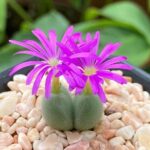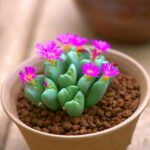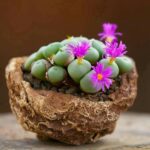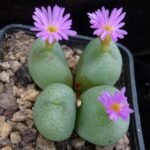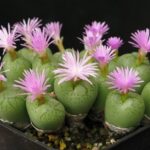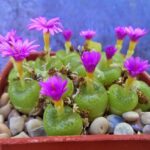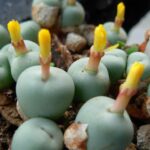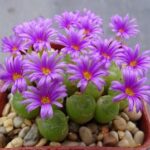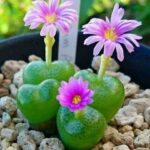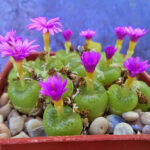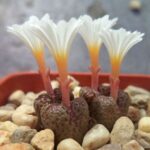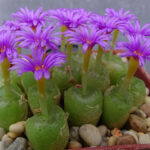Conophytum is a genus of small, succulent plants that are native to South Africa. These unique plants are often referred to as “living stones” because they closely resemble the rocks in their natural habitat. Conophytum plants are popular among succulent enthusiasts due to their interesting appearance and relatively easy care requirements. If you’re interested in growing Conophytum plants, here are some tips to help you succeed.
First and foremost, Conophytum plants require plenty of bright, indirect sunlight to thrive. It’s best to place them in a location where they will receive at least 6 hours of sunlight per day. However, be cautious of intense, direct sunlight as this can cause the plants to become sunburned. If you notice that your Conophytum plants are starting to turn red or brown, this may be a sign that they are getting too much sun.
When it comes to watering Conophytum plants, less is more. These plants are adapted to survive in arid conditions and are highly susceptible to overwatering. It’s best to allow the soil to dry out completely between waterings. During the growing season, you can water your Conophytum plants every 2-3 weeks. In the winter, when the plants are dormant, you can reduce watering to once a month or even less frequently.
Conophytum plants prefer well-draining soil that is specifically formulated for succulents. You can purchase a pre-mixed succulent potting mix or create your own by combining equal parts of coarse sand, perlite, and potting soil. Make sure the pot has adequate drainage holes to prevent water from pooling at the bottom, which can lead to root rot. Repot your Conophytum plants every 2-3 years to refresh the soil and provide them with additional space to grow.
One of the most unique characteristics of Conophytum plants is their ability to produce colorful flowers. These flowers typically bloom in the fall or early winter and come in a variety of hues, including yellow, pink, and purple. To encourage blooming, it’s important to mimic the plants’ natural habitat by providing cooler temperatures (50-70°F) and reduced watering during the dormant season. Additionally, you can fertilize your Conophytum plants with a diluted, balanced fertilizer during the growing season to promote healthy growth and flower production.
As with any succulent plant, Conophytum plants are susceptible to pests such as mealybugs, aphids, and spider mites. Regularly inspect your plants for signs of pest infestations, such as webbing, sticky residue, or tiny insects crawling on the leaves. If you notice any pests, promptly remove them by gently wiping the affected areas with a cotton swab soaked in rubbing alcohol. For severe infestations, you may need to treat your plants with an insecticidal soap or neem oil spray.
Overall, growing Conophytum plants can be a rewarding experience for both novice and experienced gardeners. By following these tips and providing your plants with the right care, you can enjoy the unique beauty of these “living stones” in your own home or garden. Experiment with different growing conditions and care techniques to find what works best for your Conophytum plants and watch as they thrive and bloom in return.
 redboth.com Decoration ideas for your home
redboth.com Decoration ideas for your home
